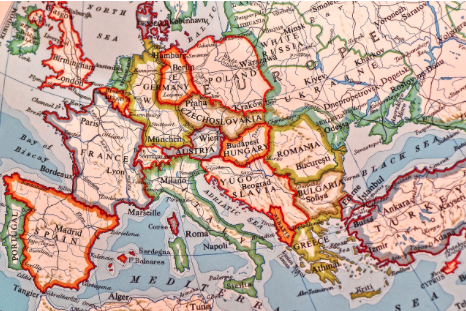
Therapeutic availability, recreational reforms, and a progressive constituency: it makes sense Europe is a marijuana mecca. In particular, medical use is growing at an unprecedented pace.
It’s as clear as day that Europe is the frontier of the medical cannabis revolution. But is the situation as progressive as the press makes it seem?
Join us to find out. We discuss the condition of cannabis in Europe, emphasizing its medical status. After analyzing the current situation, we offer insights into its potential future.
Weed in Europe: A Brief History
Cannabis isn’t native to Europe. It most likely arrived on the continent with the nomadic people called the Scythians. People initially used the plant’s stems for textile production and buds for healing.
Then came the League of Nations. This body, now known as the United Nations (UN), criminalized weed in the early 20th century. A domino effect of prohibition ensued.
UN Conventions ban cannabis in signatory countries, including the European Union (EU). As a subject to this law, it’s obliged to punish possession for non-medical purposes.
But the situation’s changing. Some jurisdictions created exceptions to the UN laws. For example, the Netherlands has had a system of weed supply since the 1970s. A wave of decriminalization and harm reduction took over in the early 2000s.
Current Cannabis Landscape
Recreational use is illegal in all European countries except Malta. But several have cannabis coffee shops or social clubs with on-site consumption.
What about medical use?
Over half of European countries legalized medical marijuana. The list includes most EU nations and several outside of the union. Isolated cannabinoid drugs like Sativex might be legal even if the herb itself isn’t.
To enhance patient access and research cannabis, several states launched pilot programs for medical use. For instance, Denmark let doctors prescribe otherwise illegal products. This move shows an attitude shift and improves healthcare options for folks in need.
Unfortunately, general accessibility remains an issue. Some states import small amounts of medical products, making them exclusive or expensive. Only the Czech Republic reimburses patients for their expenses.
The Medical Cannabis Boom
Medical marijuana is now backed by a large body of scientific research. It may lessen symptoms or even cure many conditions, and society is beginning to see its value.
Europe is a key player in marijuana proliferation. Let’s explore its industry, laws, and accessibility.
Industry Growth
The medical marijuana industry in Europe is poised for substantial growth. It’s already profitable, with a projected $571 million in 2023. Predictions claim its annual growth rate will surpass 13%.
To put percentages into perspective, each European citizen contributes an average of $285. Such a high figure signifies a considerable market with a promising future.
More countries might implement medical marijuana programs. Market profitability will also get more companies involved in the industry. For this reason, the revenue may even surpass these projections.
Access & Advocacy
European Medicinal Cannabis Association (EUMCA) is the top advocacy organization in the EU. Its goal is to create a regulatory framework for producing and prescribing cannabis.
The EUMCA represents manufacturers, suppliers, and patient advocacy groups. From political parties to grassroots organizations, such associations are popping up across the continent.
Aurora Europe is another big name in advocacy. It does lobbying and production, ensuring equal and safe access to all.
In most areas with medical marijuana, it’s on the physician to decide whether to suggest it. For this reason, Europe requires further educational resources for medical professionals. Otherwise, prescriptions remain a matter of personal attitude.
This branch of improving therapeutic toking is blossoming in Europe. Cannabis studies became available at two Spanish universities. Also, the Academy of Medical Cannabis is internationally recognized. It offers both physician and patient education.
What Does the Future Hold?
Despite the drawbacks of its medical marijuana system, Europe is well-positioned to become a revolutionary force. Its well-developed research system might push therapy options from labs to bedsides.
The complexity of weed as medicine slows down research. The plant has numerous healing compounds in varying concentrations. It can be administered in several forms, each causing different effects. But the European system is equipped to handle these challenges.
Recreational changes are also underway. Six European countries announced radical reform plans in early 2023.
The Czech Republic is drafting personal use laws. This move followed Germany’s landmark proposal of complete legalization.
Luxembourg allowed personal use cultivation, and Malta greenlit clubs for controlled consumption. Switzerland approved a trial period for recreational weed in Zurich. The Netherlands is planning to launch a legal sale program.
With recreational legalization comes greater acceptance, which supports the field of medical use. The two are intertwined, and in Europe’s case, thriving together.
Key Takeaways
Europe is entering a medical cannabis golden age, and its recreational field isn’t far behind. The landscape is transforming, which could be game-changing for the entire world.
The medical industry in Europe is only expected to grow. Legislators, physicians, and the public seem to be on the same page. Everybody sees the perks of expansion, so why halt it?
Whether you’re a doctor, patient, or advocate, it pays to join the fight. On a personal level, why not read cannabis strain reviews, choose one, and use your law-given right to blaze?





